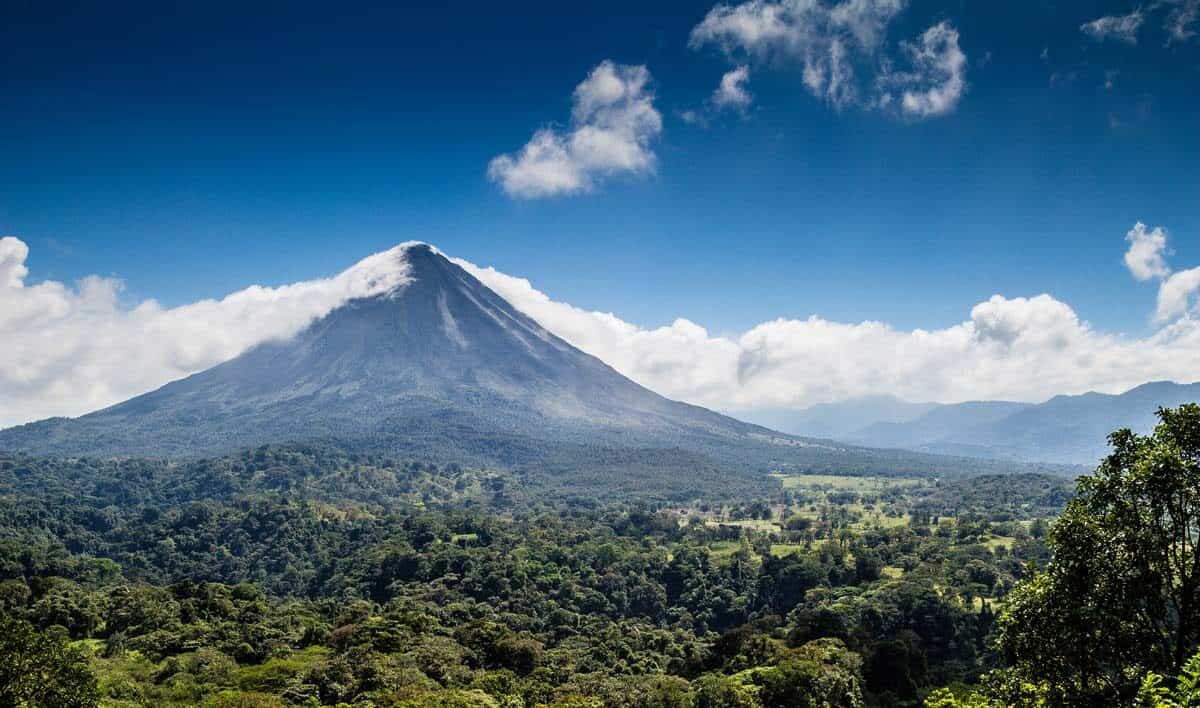
Editor’s Note: Travel is complicated right now. Please check local regulations and location openings before you go. We share places, products and activities we recommend. If you make a purchase using a link on our site, we may earn a commission.
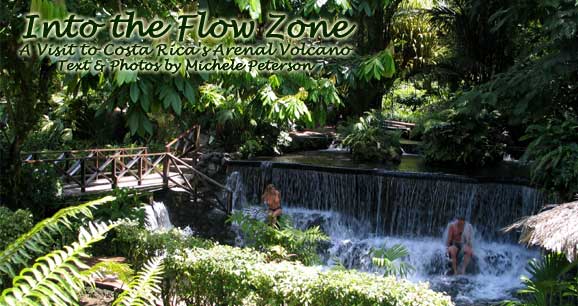
Exploring the Rainforest
I was deep in the tropical rainforest, several steps behind Bernardo Perez, my Costa Rican guide when I heard a rumble like a primordial growl behind me. Then, as though a prehistoric beast was thundering through the brush, the ground began to shake.
I did a quick shoulder check. The coast was clear, but the volcano looming over us seemed more menacing than it had earlier.“What do we do if it erupts?” I asked, hurrying to catch up. “We run,” he replied, lifting his binoculars to focus on a movement high in the canopy of trees.
Keep your own binoculars handy with a lightweight raincoat from SCOTT-e-VEST. They specialize in layers for all types of weather containing over 10 hidden pockets in each item. Check out the selection here.
“How fast does it travel?” I continued, wanting to be prepared.
“Oh, about 75 miles [120 km] an hour,” he said, pointing to a quivering broad leaf ahead of us.
I took one last look behind me, put my misgivings aside and followed him deeper into the Costa Rica forest.
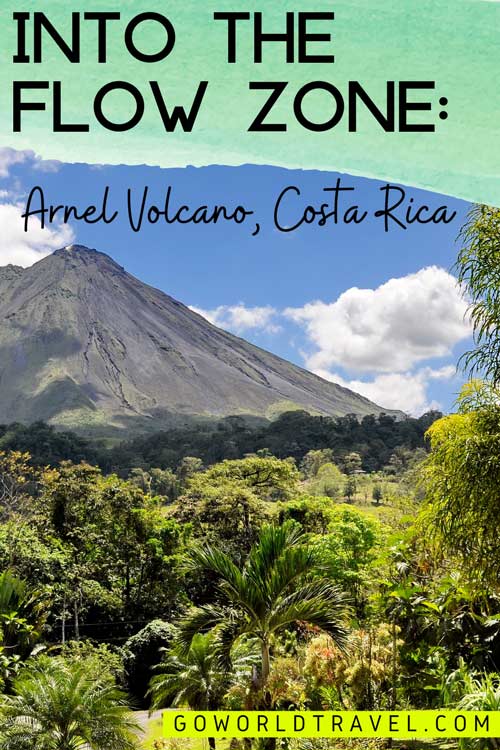
Arenal Volcano
We were hiking Arenal Volcano, 5,436 feet (1,657 m) high and located about 80 miles (128 km) northwest of Costa Rica’s capital city of San José, and I had good reason to be worried. In a country bursting with more than 100 volcanos, Arenal is not only considered the most active, but it is also one of the world’s most dangerous.
Less than a week before my visit, a series of eruptions had rocked the northern face of the volcano, spewing and spitting an avalanche of stone and gas that forced the evacuation of locals and tourists.
I am not a “lava junkie” (a volcano chaser addicted to the thrill of danger zones), so why did I choose the more dangerous northern side for my hike, instead of other safer slopes?
The attraction was a new 600-acre (2.4 km²) nature preserve near Lake Arenal. Opened in 2002, it features a two-mile (3.2 km) hike through the old-growth rainforest, traversing a series of bridges, tunnels and trails. Bridges include eight that are fixed, ranging in length between 26 and 72 feet (8 and 22 m), and six suspensions, between 160 and 320 feet (48 and 97 m) long. The trails bring visitors close to some of the densest and most diversified forests in the world.
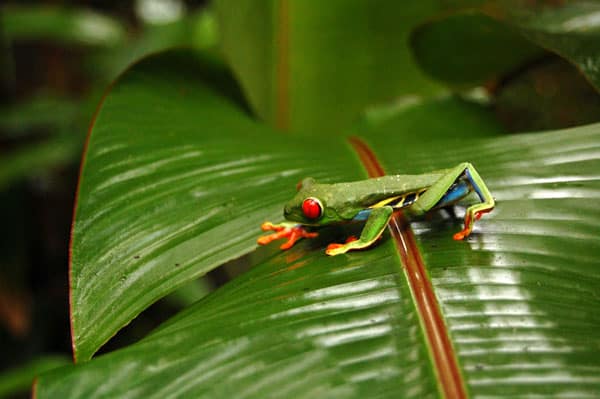
Rainforest Wildlife Erupts
Over the millennia, volcanic eruptions have contributed to the area’s dramatic beauty as well as mineral-rich soil that supports forests and homes for myriad species of animals and birds.
“A dart frog. Very poisonous,” said Bernardo, pointing to a glossy red shape on a broad leaf. “And there, over to the left. Do you hear that noise?”
I did. It was much like the sound of a creaking door.
“It’s a chestnut-mandibled toucan. The largest, but not the prettiest of the species,” he explained. I looked up and there was a large bird, sitting like a sentinel with an enormous yellow beak.
I ducked as something flew straight for my hair. A crystal butterfly, its transparent wings outlined in blue like a cartoon character.
“Watch out,” said Bernardo, pointing down. Leaf-cutting ants, in perfect formation, each carrying brilliant green, round chomped bits of leaf, were winding across the trail. We stepped around as they made their way deeper into the underbrush. With a full dance card of wildlife around me, it was easy to forget I was in the shadow of a volcano.
Then, through a gap in the foliage, its cone appeared. It looked so benevolent, its wisps of smoke drifting upward in the light breeze; it was easy to understand how, for hundreds of years, people believed that it was innocently dormant. Then, as if to remind me of its volatility, it growled — just like a living being. I gave an involuntary jump, remembering reports of July 29, 1968, when Arenal suddenly erupted, sending out shock waves, hot gases and rubble.
By the time it settled, it had destroyed two villages and killed 87 people in Costa Rica. Stories of that day describe heavy ashfall that blackened the sky during daylight hours and huge mudflows that carried boulders more than 50 miles (80 km) away. The two new craters it spawned continue to belch ash and rock to this day.
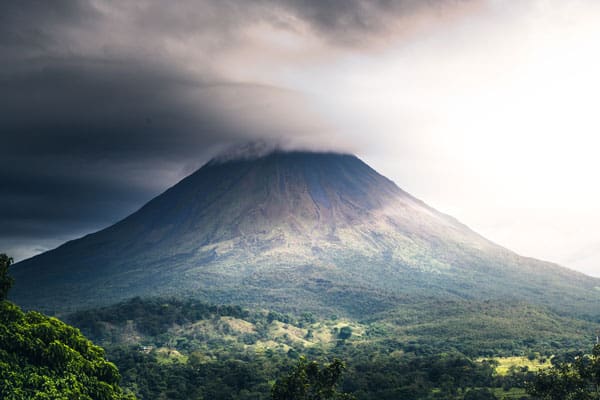
Natural Mysteries
Over the centuries, as with all natural phenomena that man cannot explain, volcanoes have been treated with awe and respect. Often viewed as gods, they were both revered and feared. The Guatuso Indians, who once lived in the Arenal area, believed the volcano was home to the God of Fire and regularly performed rituals intended to calm the volcano and control destiny. Today, visitors continue to be drawn to its compelling beauty.
But, because the area is still considered a danger zone, several precautions are in place to ensure visitors’ safety. The Observatorio Vulcanologico y Sismologico de Costa Rica, Universidad Nacional (OVSICORIUNA) operates a seismographic network throughout the entire country and is prepared to issue warnings of impending eruptions or other hazardous events.
The Smithsonian Institute has a monitoring station on the south side of the volcano where researchers from around the world come to study its activity. Even nearby businesses clearly mark evacuation routes for safety. Yet, sometimes these precautions are not enough. In August of 2000, an eruption of gases, ash and incandescent rocks tumbled down the slope, killing two people and injuring one other.
The shadow of the volcano and its dark history added some sobering thoughts to the final leg of our hike. I paused to reflect and admire a red shrimp flower that was being pollinated by a tiny hermit hummingbird.
“Stop. I smell monkey poop,” said Bernardo, pointing high above us.
Sure enough, despite the unscientific announcement, there were dark shapes moving high in the canopy. Spider monkeys — a rare sighting compared to the more common howler monkeys — danced through the trees, looking like large shadowy people, their long black arms stretching impossibly across the branches.
Then, like a giant clearing his throat, the volcano rumbled. The shrimp flower quivered for a brief moment.
Beauty and danger — for me, an irresistible combination.
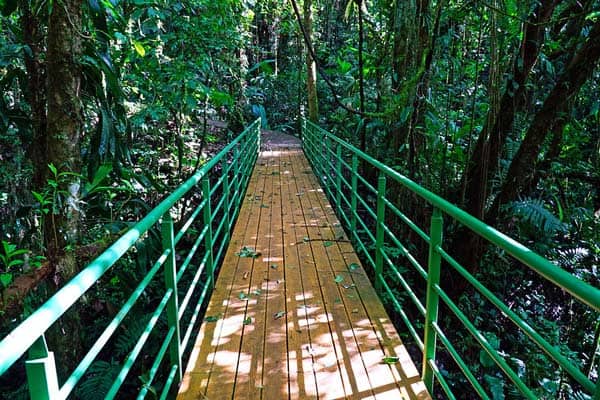
If You Go
Costa Rica National Tourist Bureau – www.visitcostarica.com
www.hangingbridges.com – Arenal Hanging Bridges are located 11 miles (17 km) from La Fortuna, the town closest to Mount Arenal. Additional tours such as bird-watching and a guided night walk are available for an additional charge.
Several tour companies, such as Jacamar Tours and Sunset Tours offer guided hikes of the area as well as transportation.
- How to Get Around in Sydney: A Local’s Guide to Traveling Around Sydney - April 24, 2024
- The Low-Key Magic of Ghent, Belgium - April 22, 2024
- Discover the Hidden Charm of Extremadura in Spain - April 20, 2024
